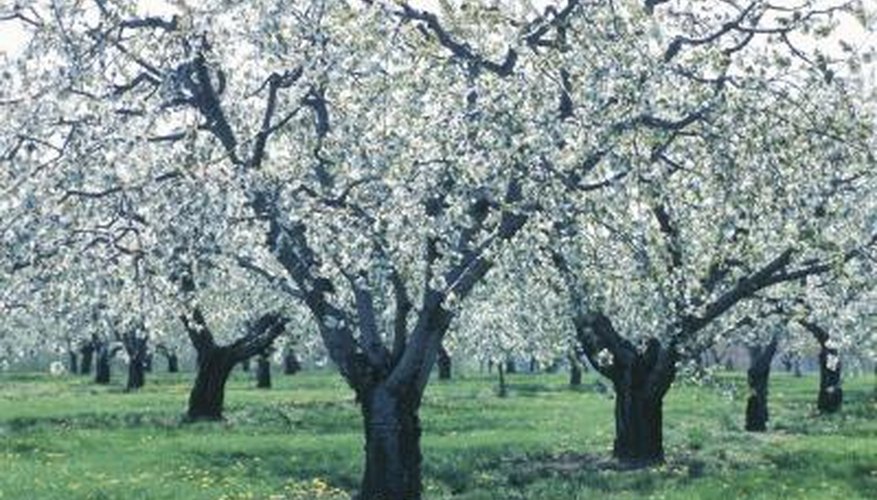Apple trees, like many other fruit trees, have relatively thin bark that is prone to splitting under certain environmental conditions. The bark acts as a protective shield against insects and disease organisms, but healthy trees have the ability to form callouses over split areas over time, preventing infection or infestation through the wound.
Frost Cracks
Even in winter, the tissues of an apple tree contain moisture. During periods when the temperatures fluctuate rapidly between freezing and thawing, moisture expands and contracts inside the bark and the wood beneath. In some cases, this continual expansion and contraction causes the thin layer of outer bark to split and expose the wood. Frost cracks are most likely to occur in areas where a previous trunk injury occurred and weakened the bark.
- Even in winter, the tissues of an apple tree contain moisture.
- In some cases, this continual expansion and contraction causes the thin layer of outer bark to split and expose the wood.
Sunscald
Sunscald is also caused by rapid temperature changes, but in this case the culprit is direct sunlight hitting the tender bark of young trees or trees that have recently undergone extensive canopy pruning. Sunlight heats the bark, usually on the southwest side of the tree, which then cools rapidly on frosty nights. The sudden shift kills the inner bark, and the dead area splits open or sloughs off during the following growing season when the trunk grows in diameter.
Sudden Growth
Occasionally, bark can split or peel simply due to normal growth. In certain unfavourable conditions like drought, growth slows to almost a standstill and moisture levels in the bark are reduced. If such a period is followed by a sudden increase in available moisture and favourable growing conditions, the tree may begin to grow too rapidly for the thin outer bark to keep up, and it will split and peel when the internal pressure becomes too much.
Bird Damage
Areas of split and missing bark with small, regular holes bored into the wood at even intervals are the mark of the yellow-bellied sapsucker, a bird with a particular taste for apple trees. While the bark disturbance caused by these birds is unsightly, healthy trees do not usually sustain long-term damage. Some people try to control yellow-bellied sapsucker damage by coating the trunk with adhesive material, spreading tanglefoot netting over the trunk or placing scarecrows nearby, with generally limited effectiveness.
